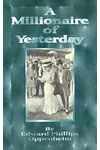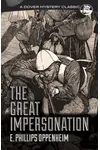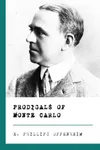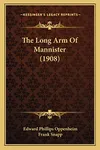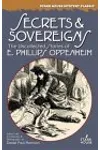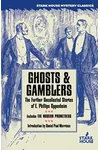Picture a British storyteller who spun tales of spies, high society, and heart-pounding intrigue—meet E. Phillips Oppenheim! Known as the 'Prince of Storytellers,' this prolific author crafted over 150 novels and countless short stories, blending mystery, romance, and espionage into irresistible narratives. From the glitz of Monte Carlo to the shadowy world of diplomacy, Oppenheim’s works captivated readers worldwide, earning him a spot on the cover of Time magazine in 1927.
Born in London in 1866, Oppenheim’s journey from leather merchant to literary sensation is as thrilling as his plots. His vivid storytelling and knack for crafting sophisticated heroes made him a pioneer of the modern spy thriller, influencing writers like John Buchan and leaving a legacy that still enthralls readers today.
The Making of E. Phillips Oppenheim
Edward Phillips Oppenheim was born on October 22, 1866, in Tottenham, London, to a leather merchant father and a supportive mother. After attending Wyggeston Grammar School in Leicester, financial struggles forced him to leave at 17 to join his father’s business. Yet, his passion for storytelling burned bright. Writing in his spare time, he published his first novel, Expiation, in 1887, with his father’s financial backing. Though it barely broke even, it sparked a lifelong career. Around 1900, a wealthy New York businessman, captivated by Oppenheim’s early works, bought the leather business and made him a salaried director, freeing him to write full-time.
E. Phillips Oppenheim’s Unforgettable Stories
Oppenheim’s novels are a dazzling mix of espionage, romance, and high-stakes adventure, often set in glamorous locales like the French Riviera or Monte Carlo. His most famous work, The Great Impersonation (1920), is a masterclass in suspense, weaving a tale of mistaken identities between a British and German lookalike during World War I. It was so popular it was adapted into films three times, including a 1942 wartime propaganda piece.
Other gems include The Long Arm of Mannister (1908), a gripping tale of revenge and redemption, and The Devil’s Paw (1919), which explores socialism’s impact on British politics amid war. Oppenheim’s style—marked by snappy dialogue, charismatic rogues, and intricate plots—made his stories escapist delights. He dictated his works to a secretary, once churning out seven novels in a single year, a testament to his relentless creativity.
His 38 short story collections, like Peter Ruff and the Double-Four (1912), feature recurring characters, a technique Oppenheim pioneered to keep readers hooked. His tales of polished crooks and daring spies offered a thrilling escape, earning praise for their 'dispatch-box atmosphere' and 'femme fatale' charm.
Why E. Phillips Oppenheim Matters
Oppenheim’s influence on the thriller and espionage genres is undeniable. He laid the groundwork for the 'Rogue Male' archetype, inspiring authors like John Buchan and Geoffrey Household. His ability to mirror geopolitical anxieties, especially around World War I, made his stories resonate with readers. Over 30 of his works were adapted into films, cementing his cultural impact.
Today, his legacy lives on through digital editions and collections like Secrets and Sovereigns (2004), which introduced uncollected stories to new audiences. Oppenheim’s escapist charm and intricate narratives continue to captivate, proving that a good spy story never goes out of style.
About E. Phillips Oppenheim
<- Born: October 22, 1866, in London, England
- Died: February 3, 1946, in Guernsey, Channel Islands
- Key Works: The Great Impersonation, The Long Arm of Mannister, The Devil’s Paw
- Notable Fact: Featured on the cover of Time magazine in 1927
Ready to dive into a world of spies and secrets? Grab The Great Impersonation and lose yourself in E. Phillips Oppenheim’s thrilling espionage adventures!











